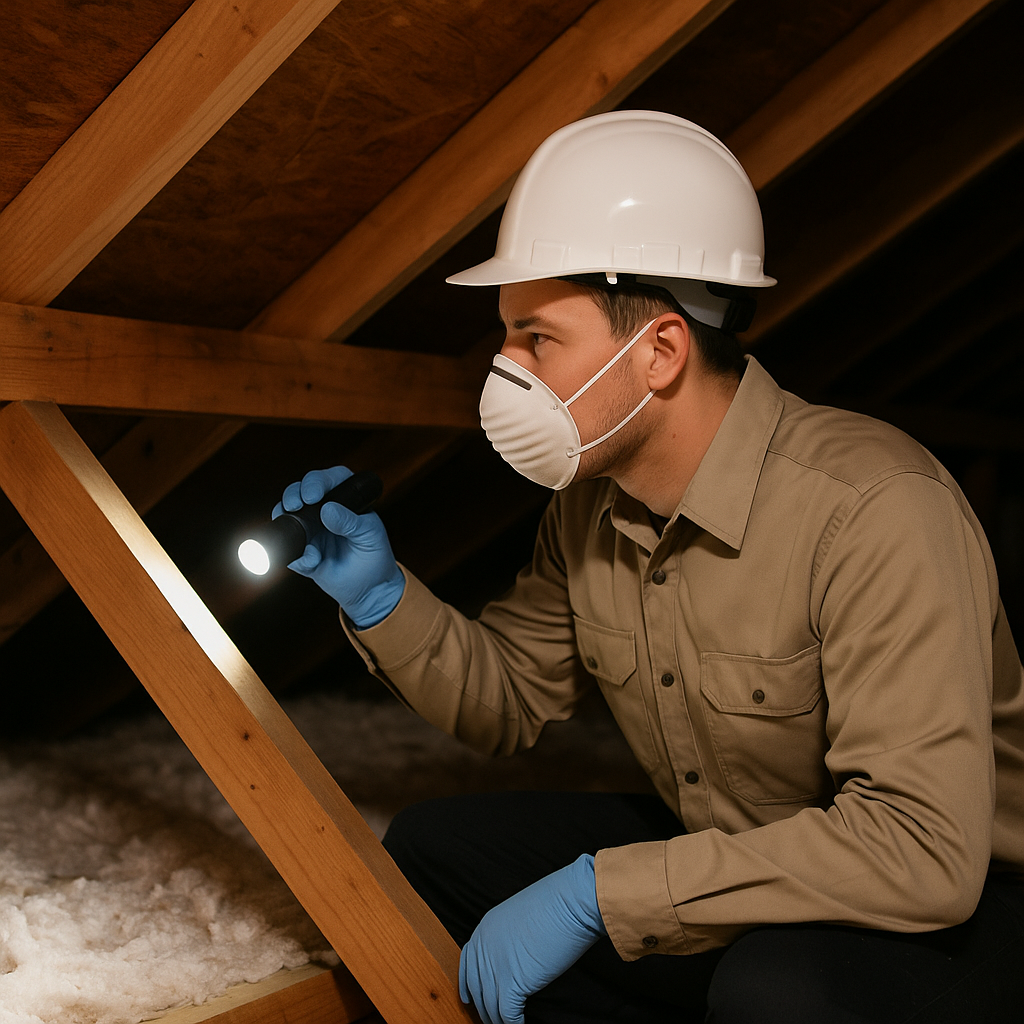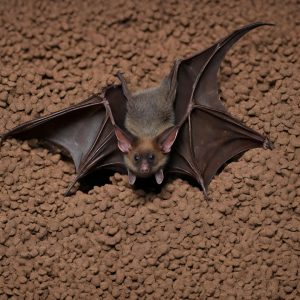The Difference Between Professional Pest Control and DIY Methods
When pests invade your home, it’s tempting to grab a spray can or a few traps and handle the problem yourself. After all, DIY pest control seems quick, affordable, and convenient. But while over-the-counter products may offer temporary relief, they often fail to address the root cause of the infestation.
Professional pest control companies take a much more strategic approach. They use specialized tools, advanced products, and training to identify, treat, and prevent pests effectively and safely. Understanding the difference between professional pest control and DIY methods can help homeowners make informed decisions that protect their property and family long-term.
Understanding the Core Difference
DIY pest control focuses on quick fixes by eliminating what you can see. Professional pest control focuses on long-term prevention, eliminating what you can’t see.
When homeowners treat pests themselves, they typically rely on store-bought sprays, traps, or baits. These products may kill visible insects or rodents but rarely eliminate the colony, nest, or breeding sites hidden behind walls or under floors.
Professionals, on the other hand, are trained to locate entry points, identify species accurately, and use targeted treatments that address both the infestation and its source.
Inspection and Identification
DIY Approach
Homeowners often misidentify the type of pest they’re dealing with. Carpenter ants and termites for example, both damage wood. However, the products and techniques for removing them are entirely different. Using the wrong treatment can make the problem worse by spreading the colony or driving pests deeper into hidden areas.
Professional Approach
A licensed technician begins with a detailed inspection. They look for droppings, chew marks, nests, entry holes, and environmental factors that attract pests. They also identify the exact species (mice vs rats, carpenter ants vs pavement ants, German roaches vs Oriental roaches) since each requires a unique treatment plan. Proper identification is the foundation of effective pest control. It determines which products to use, where to apply them, and how to prevent the problem from returning.
Treatment Methods and Products
DIY Approach
Most DIY products available at hardware stores are designed for light infestations. They contain lower concentrations of active ingredients and are meant to be safe for general consumer use. While this makes them accessible, it also limits their effectiveness for serious infestations.
Additionally, DIY sprays or powders often only treat the surface layer of the problem. They may kill a few insects but leave eggs, larvae, or nests untouched. The result is a short-term improvement followed by a quick resurgence.
Professional Approach
Professional pest control companies use commercial-grade products that are stronger, more targeted, and applied with precision. These products are approved by regulatory bodies and used in exact dosages to minimize risk while maximizing results.
Technicians are trained to apply these materials safely in cracks, voids, and inaccessible areas where pests actually live. Many professional treatments also include growth regulators, residual sprays, or baiting systems that continue working for weeks or months after application.
Safety and Environmental Impact
DIY Approach
When using over-the-counter chemicals, homeowners often overapply or use them in the wrong areas. This can lead to unnecessary exposure for pets, children, and even beneficial insects. Improper use can also cause contamination in kitchens, food storage areas, or soil.
Professional Approach
A trained pest control expert understands how to balance effectiveness with safety. They know which products are safe to use around pets, which require evacuation, and how to prevent environmental runoff or cross-contamination.
Modern pest control companies also emphasize eco-friendly pest management by using targeted baits, reduced-toxicity products, and prevention techniques that minimize the need for heavy chemical applications. The goal is to eliminate pests while maintaining a healthy home environment.
Addressing the Root Cause
DIY Approach
Most DIY treatments focus on symptom control. This means spraying visible pests or placing traps where activity is seen. But unless the cause of the infestation is found and corrected, the problem will come back.
One common example is spraying ants. While it may kill the foragers, if the colony is deep behind walls, new workers will replace them within days. Similarly, killing mice without sealing entry holes allows new rodents to enter freely.
Professional Approach
Professionals take a holistic view by looking at why the infestation started. Moisture buildup, cracks in the foundation, uncovered vents, or food sources help identify the source of the problem. They don’t just kill pests, they prevent new ones from coming in.
By sealing entry points, improving sanitation, and identifying environmental attractants, professional pest control offers long-term protection that DIY efforts can’t match.

Equipment and Technology
DIY Approach
DIY pest control relies on basic tools like spray bottles, glue traps, and consumer bait stations. These can work for minor issues but lack the power and precision of professional equipment.
Professional Approach
Technicians use specialized tools like dust applicators, baiting systems, moisture meters, UV lights, and thermal imaging cameras to detect hidden pest activity. For wildlife, professionals use humane one-way doors, traps, and exclusion barriers that prevent re-entry once the animals leave.
Advanced technology helps professionals locate the exact source of the problem rather than treating blindly. This precision leads to faster results and fewer callbacks.
Cost and Value
DIY Approach
DIY methods appear cheaper at first. A can of insect spray might cost $15, while a bag of traps costs $20. However, if the infestation continues or worsens, homeowners often spend hundreds of dollars over time without ever resolving the issue. Even worse, pests like rodents or carpenter ants can cause thousands of dollars in property damage if not handled correctly.
Professional Approach
Professional pest control services involve an upfront cost, but they provide value through expertise, safety, and long-term prevention. A technician not only removes pests but also protects your home from future infestations, saving you money in the long run.
Most companies also offer warranties or service plans, ensuring free follow-ups if the problem returns. This peace of mind is something DIY efforts can’t guarantee.
Time and Convenience
DIY Approach
DIY treatments require multiple applications, constant monitoring, and follow-up cleaning. Homeowners must also research products, learn proper application techniques, and hope for the best.
Professional Approach
A professional inspection and treatment typically take a few hours, with results that last for months. Pest control companies schedule follow-up visits as needed, handle cleanup, and provide detailed reports on what was done and what to expect next. This saves homeowners time and ensures the problem is handled efficiently from start to finish.
Preventative Maintenance
DIY Approach
DIY pest control rarely includes prevention. Once the pests are gone, most homeowners stop treatment until the next problem arises.
Professional Approach
Pest control companies offer preventative maintenance plans that keep your home protected year-round. Regular inspections catch early signs of activity before infestations grow. Seasonal treatments target specific pests common in spring, summer, and fall, such as ants, wasps, and rodents. Preventative service saves homeowners from recurring infestations and the stress that comes with them.
When DIY Might Work and When It Won’t
DIY methods can be effective for very minor issues. A few ants in the kitchen, a wasp nest near a shed, or a spider in the basement can easily be handled. However, once the problem becomes frequent, recurring, or widespread, professional intervention is necessary.
If you see multiple signs such as droppings, damaged insulation, or constant scratching noises, it’s time to bring in an expert. Professionals don’t just solve the visible issue, they restore your home’s safety, cleanliness, and peace of mind.

We’re Ready to Help!
While DIY pest control has its place, professional pest control delivers lasting results. The difference lies in experience, equipment, and strategy. Professionals eliminate infestations at the source, prevent future entry, and ensure your home remains pest-free year-round.
If you’re struggling with rodents, ants, roaches, or wildlife in your home, contact Elite Pest and Wildlife Removal to see how we can help with your pest problems. Our licensed technicians serve homeowners across Hamilton, Burlington, Oakville, and surrounding areas, offering effective and affordable solutions.
Call 226-208-7793 or visit elitepestandwildlife.ca to schedule your inspection today!


